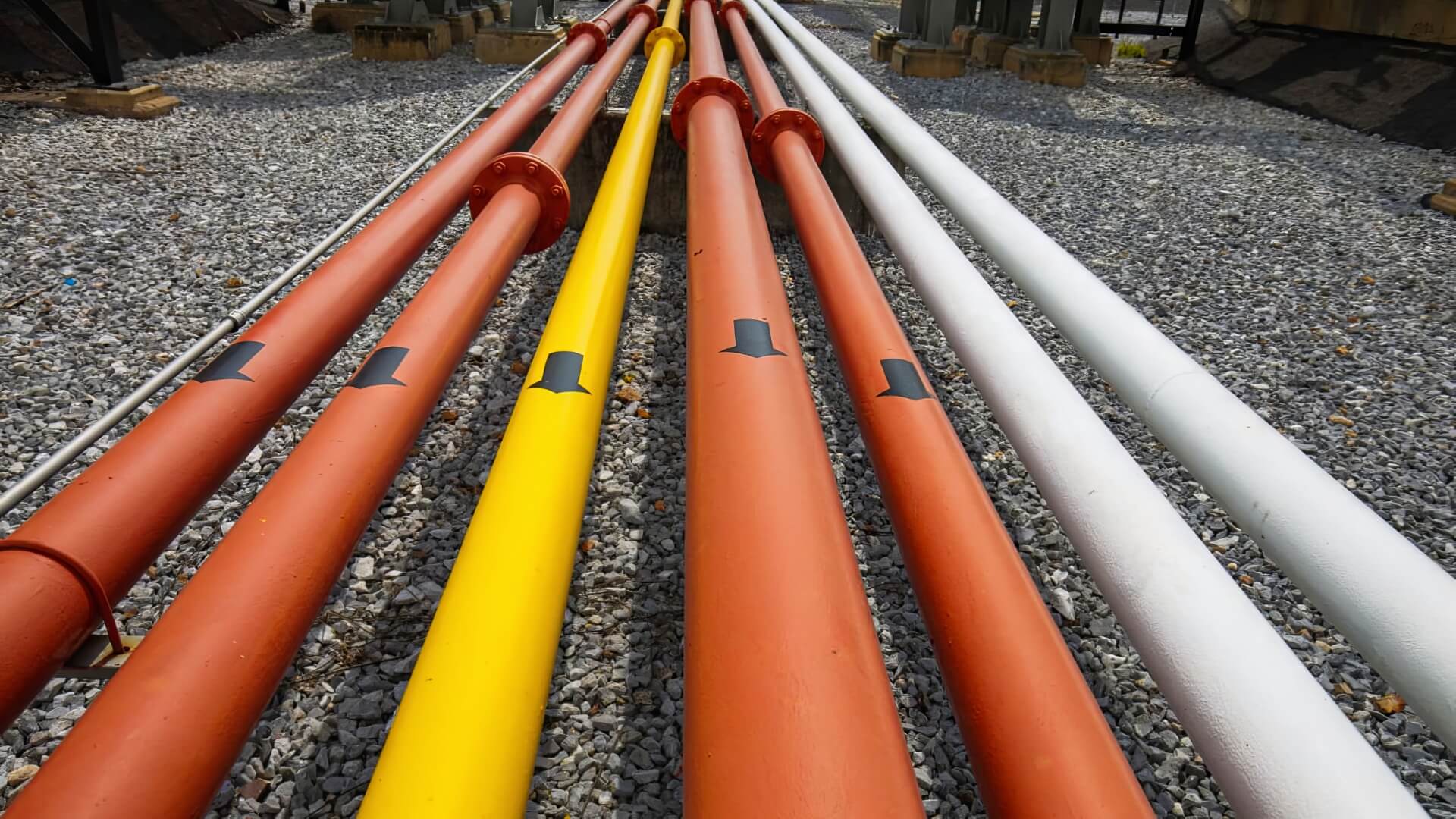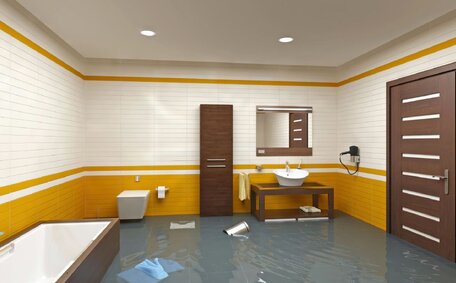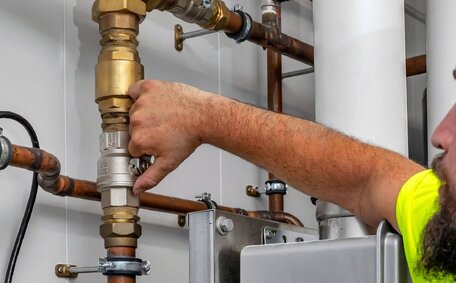Understanding the Dangers: Why You Must Childproof Gas Appliances
Unsecured gas appliances pose risks of burns and carbon monoxide poisoning for young children.
Oven knobs and controls are frequently within a toddler’s reach, posing risks of unintentional activation.
Children’s developing lungs are vulnerable to nitrogen oxides from gas stoves, increasing the risk of respiratory issues with regular exposure.
Installing child-rated knob covers, safety latches, guards, and locking appliances when not in use is crucial for your child’s safety. Just as you protect electrical outlets and lock cabinets with chemicals, applying similar vigilance to stoves using natural gas is essential. It’s also vital to teach children about the hazards associated with cooking gas.
Parents can foster a safer home environment by comprehending these risks and implementing childproofing solutions.
Identifying Hazards Posed by Different Gas Appliances
The average household has multiple gas-powered appliances that present hazards for children, such as:
- Stove ovens - Knobs and surfaces pose burn risks, and unused gas can lead to carbon monoxide poisoning.
- Hot water heaters - High temperatures can cause severe scalding.
- Gas space heaters - Open flames present a burn risk to children.
Gas-powered devices like stoves often pose risks, including exposure to open flames, scalding water, and harmful fumes if misused. Contact with these hazards can result in significant injury or illness for young children. Recognising these dangers is the first step toward protecting kids by installing proper safeguards like stove oven knob covers, guards and latches to childproof gas appliances.
Stoves and Ovens
Gas stoves and ovens pose multiple dangers that warrant childproofing measures. The knobs and hot surfaces provide children access to open flames and extreme temperatures capable of causing severe burns. Young children may accidentally turn on the stove, one when they are climbing or leaning on stove tops and ovens.
Carbon monoxide, an invisible and odourless gas, can leak from burners left on, creating a fatal risk without obvious warning signs.
Parents should preferentially use the rear burners and keep oven doors closed with pot handles turned inward to minimise risks. Cabinet locks, oven knob covers, and flame-retardant barriers enhance safety without hindering appliance use, further protecting your child.
Gas Hot Water Systems
Gas hot water systems pose a significant risk of burn injuries due to the extremely high temperatures used to heat water. Should children come into direct contact with hot water from open faucets or exposed pipes, they would sustain severe, disfiguring burns in seconds.
The knobs and controls that regulate hot water heater functions may also be accessible to younger kids who could inadvertently activate appliances or adjust temperatures to dangerously hot levels. Some gas hot water systems rely on a pilot light that if tampered with, can allow gas to leak out creating a hazardous situation.
Fitting thermostatic mixing valves and stove knob covers helps control water temperature and reduce scalding risks, while insulating pipes enhances safety.
Gas Heaters and Fireplaces
Gas space heaters and fireplaces pose clear fire and burn risks if children have access. The open flames used to generate heat can lead to serious injuries if touched. There is also the potential danger of air pollution such as carbon monoxide poisoning if heaters or fireplaces are not properly ventilated.
Installing guard screens and child safety stove knob covers is critical in protecting young children from open gas flames. Child safe knob covers will also help prevent kids from turning on appliances. For optimum safety, windows should be opened or exhaust fans used when operating gas heaters and fireplaces to enhance indoor air quality and allow dangerous fumes to escape.
Taking these child proofing precautions will help mitigate the threats posed by these heating appliances. Children must also learn to maintain a safe distance to prevent the risk of severe burns or smoke inhalation incidents.
Securing Stoves and Ovens: Knob Covers and Safety Latches
There are practical and effective products available to childproof stoves, ovens, and other gas appliances. Knob covers help limit access to control dials, preventing children turning the stove on accidentally or adjusting temperatures. They fit securely over existing knobs and some designs even allow for one hand operation with intuitive safety latches.
Choose knob covers that offer a balance of durability and user-friendliness for optimal outcome.
Scout for covers child safety-certified to tailor them to your kitchen appliances’ specifics and ensure a snug fit.
For optimum protection, a knob cover designed for stove use can be paired with supplementary stove safety devices like slide locks to manage oven doors. Guards that mount to the floor or on counter corners also create a secure barrier. Embracing a layered approach with childproof covers and additional safety measures helps keep all household members secure.
Choosing the Right Childproofing Equipment
Stove ovens will require sturdy, tamper-proof oven knob covers sized appropriately for the existing controls.
Choose models with safety latches for added security.
Choose knob covers and latches made from robust, heat-resistant materials such as high-grade plastics to ensure child safety. With various options available for all household gas equipment, focus choices on well-designed safety without overly complicating operations.
Ensure that safety devices attach securely to appliances and are durable against impacts, while permitting regular use.
Installing and Using Stove Knob Covers Effectively
Installing stove knob covers is a quick task that significantly enhances safety. Ensure the stove is off and cool before fitting the covers.
- select covers that are compatible with your stove knobs make and model to ensure a tight fit over the existing knobs.
- Clean knobs thoroughly then slide covers completely over each knob, pressing firmly into place.
- Check that covers are securely fitted and any safety latches or straps are correctly fastened.
- Verify that the full range of motion is not restricted by doing a test turn of the knobs, just pull on the covers gently.
- Demonstrate to older children how to properly access knobs through safety latches when needing to operate the stove.
- Conduct periodic inspections of covers to check for damage or loosening over time.
Although there is a period of adjustment, stove safety covers should not impede cooking; they’re designed to add a layer of safety by slowing down access.
Using Other Safety Devices Like Locks and Guards
Beyond knob covers, consider safety locks and guards as additional childproofing methods for gas appliances.
Drawer and cabinet locks can secure oven and stove doors to prevent children from accessing the interior. Choose heat-resistant models and ensure any cords are neatly secured. Clear appliance guards, which have the appearance of robust barriers, obstruct access, fortifying the area around stoves.
It is ideal to install locks and guards in conjunction with knob covers for maximum protection. Keep young children out of the kitchen unless closely supervised by an adult, even when safety devices are in use.
Educating Children About Gas Appliance Safety
Educate children on gas appliance safety, tailoring the message to their age and emphasizing the need for supervision.
Teach toddlers simple concepts like 'hot’ and 'no touch’, using visuals. School-aged children can grasp fire risks and learn proper appliance use under guidance.
Children should also learn how to recognise signs of a gas leak, like rotten egg odours. Advise never turning knobs themselves and reporting any concerns to adults immediately. Modelling behaviour is an effective way to reinforce safety practices.
Ongoing coaching helps information sink in over time as cognition advances. But do not rely solely on education or alarms. Securing access and maintaining vigilance around gas appliances remains essential, despite childproofing methods used.
Maintaining Diligence In Keeping Appliances Secured
Keeping gas appliances properly secured requires ongoing diligence even after initial childproofing steps are taken. As children grow and gain new abilities, reassessing safety measures must become routine.
Conduct periodic inspections of all childproofing devices like knob covers and locks to check for wear and ensure they remain firmly attached. Replace any damaged equipment immediately. Also confirm appliances are fully turned off when not in use to prevent accidental ignitions or gas leaks.
Reinforce safe behaviour by restricting access to kitchen areas without supervision, no matter the age. Be aware that curious kids will test boundaries and require monitoring around secured gas appliances. Ensure you maintain clear lines of sight and give consistent safety reminders to encourage respect for these necessary precautions.
Maintain child safety by routinely inspecting and updating safety equipment, supervising closely, and setting clear rules around gas appliance use.
Recognizing Limitations of Childproofing Measures
Childproofing is crucial but not infallible; it complements, but does not replace, vigilant supervision.
Knob covers, locks and guards can be circumvented by particularly observant or persistent children. As kids grow and gain new abilities, they may find ways to turn stove safety devices. Continually re-evaluating and upgrading childproofing strategies is key as children age.
There is also the possibility of improperly installed or maintained products failing over time. This makes periodic checks and replacements of any damaged safety equipment vital. Caregivers should never fully rely on these precautions and must provide active monitoring of children around gas appliances.
If concerns persist about gas appliance safety, seek a professional gas technician to assess and address potential risks.
While absolutely use common childproofing aids, understand that nothing replaces proper supervision and an attentive caregiver. Ongoing vigilance is required to keep curious kids safe, even when the best precautions are taken.






